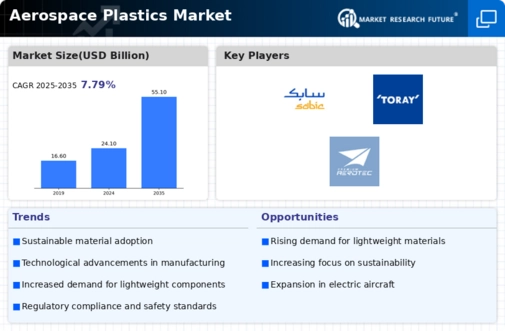Aerospace Plastics Market Summary
As per Market Research Future Analysis, the Global Aerospace Plastics Market was valued at USD 24.15 billion in 2024 and is projected to grow to USD 55.13 billion by 2035, with a CAGR of 7.79% from 2025 to 2035. The market is driven by the rising demand for lightweight materials in commercial and military aircraft, as well as the need for high-performance polymers that can withstand extreme conditions. Key applications include aerostructures, fuselage parts, and interior components, with significant contributions from the commercial aircraft sector. The Asia-Pacific region is expected to exhibit the highest growth rate due to rapid industrialization and government investments in aviation infrastructure.
Key Market Trends & Highlights
The aerospace plastics market is witnessing significant growth driven by various factors.
- Market Size in 2024: USD 24.15 billion; projected to reach USD 55.13 billion by 2035.
- CAGR from 2025 to 2035: 7.79%; driven by demand for lightweight materials.
- Asia-Pacific expected to have the highest CAGR due to industrialization and government support.
- Rising demand for commercial and military aircraft fuels the need for aerospace polymers.
Market Size & Forecast
| 2024 Market Size | USD 24.15 billion |
| 2035 Market Size | USD 55.13 billion |
| CAGR (2024-2035) | 7.79% |
Major Players
Key Companies include Hyosung Corporation, Mitsubishi Heavy Industries, Kaman Corporation, SABIC, TORAY INDUSTRIES, BASF SE, Evonik Industries, Solvay, Hexcel Corporation, Premium AEROTEC.













